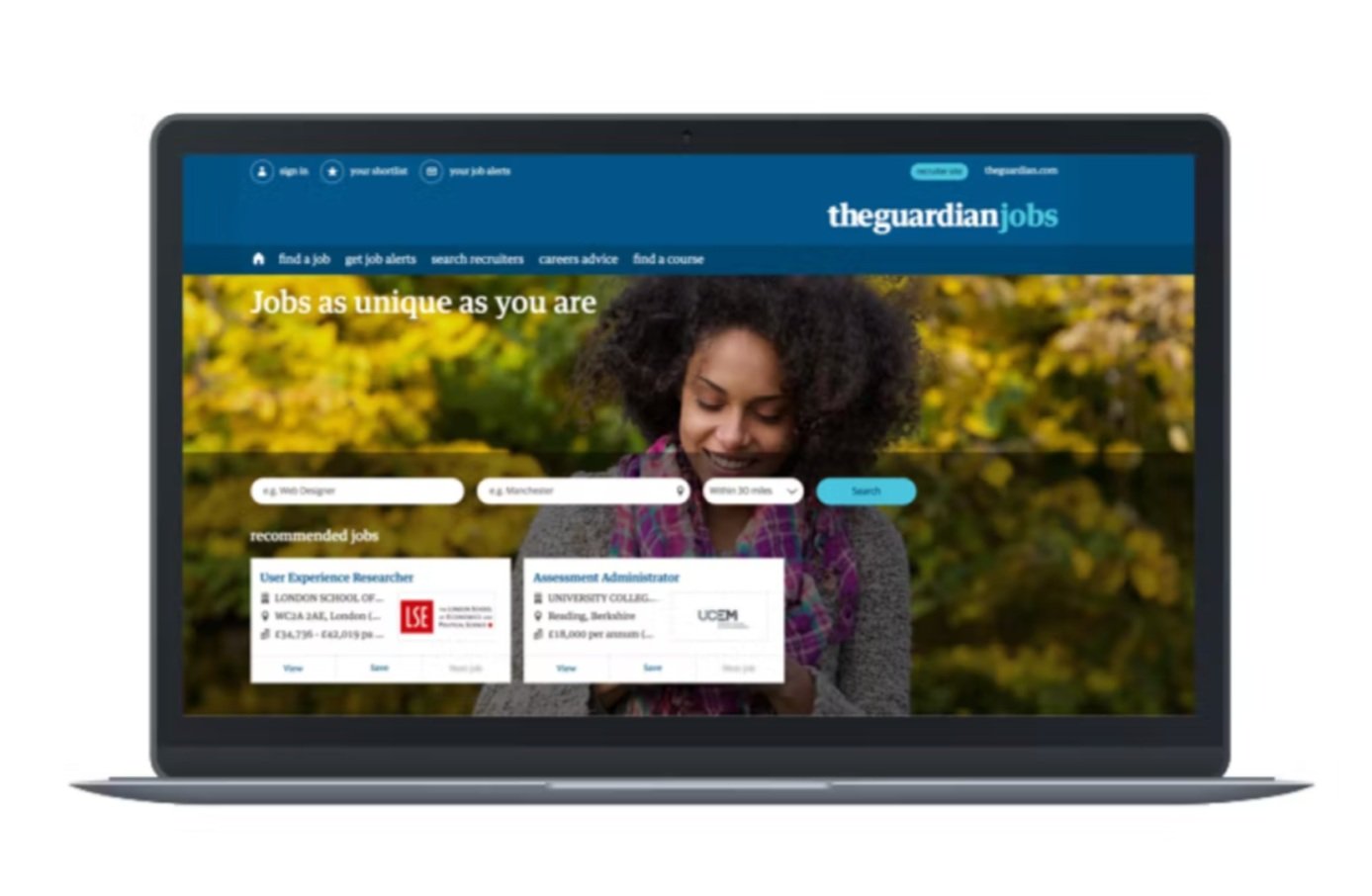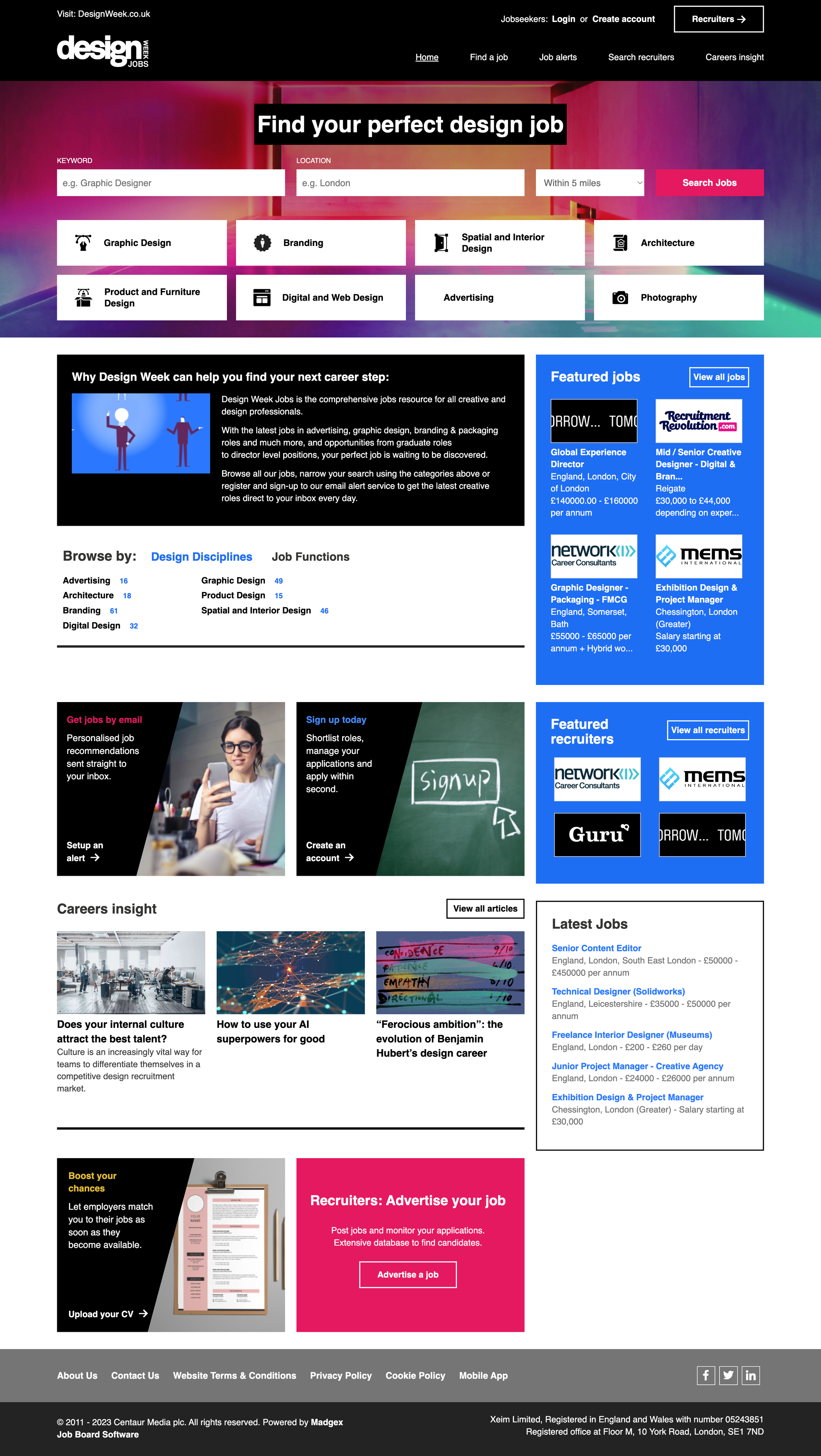Headless for scaleable microservices
Company
Madgex
Duration
2 years
Role
Digital Designer
Skills
Product Design, Brand Design, Design Systems, User Research
Tools
Sketch, Jira
Guardian job board
Background
The Madgex platform was 15 years old, and re-developing and building on the legacy platform were costly and slow. Existing data layers and business logic services across the Madgex platform were becoming unsustainable.
Challenge
The platform had 12 different template types that served 130 clients across News, Publishing & Associations verticals. These templates were designed to provide a great user experience while also allowing our clients to easily update their content using their CMS. On top of this, some enterprise clients were on custom templates.
Research
We also knew that developers were a crucial part of the equation, and wanted to support them in their work with us. We started by collecting data from all the developers at the company. We asked them a few questions; how much time they spent on each feature and whether or not they were satisfied with the company's support for their needs. We also asked them about the things that frustrated them about the platform, and what we could do better, whether it's optimizing performance by removing unnecessary code from our platform or helping them simplify their process by putting the right tools in front of them.
We then used this information to create an audit of our product's endpoints, which included everything from APIs to content. Our goal was to make sure that any issues that were raised in this audit would be addressed quickly and efficiently—so we wouldn't have to keep reminding people about them.
Production
We started by identifying a vertical slice of the product. This would give us a basis for designing our prototypes, and help us test our headless theory. We then implemented the new technology to minimize disruption and downtime for our customers.
To do this, we rebuilt components using a white-label style approach with design tokens that could be applied depending on the brands’ style tile.
DesignWeek job board using Vine theme
MarkeitngWeek job board using Vine theme
Outcome
Technical debt became easier to work on across the business and eventually new features were shipped. We were able to provide clients with more engaging end products by designing output that was more creative and emulated the editorial sites more accurately. The general sentiment from our clients was positive as they were able to receive updated sites for free.





